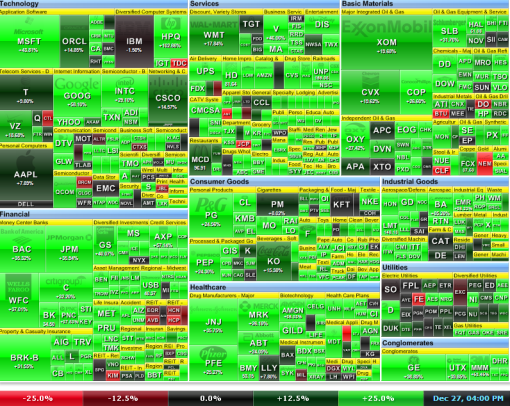Written By: Matthew Boysel
As 2014 comes to a close, those who participated in the stock market since the beginning of the year have experienced exceptional returns in this bull market. It’s truly been an exciting year for investors to see the rise in equities – and most importantly in their portfolios.
With the economic outlook looking bright for 2014 according to numerous economists, we expect to see GDP increase, unemployment to fall, increase in consumer confidence and continued improvements in the housing market.
With the S&P 500 boasting 30% gains year-to-date, investors are now being limited in their search to find solid, undervalued stocks. Those who are staying in the market for 2014 should be on the look-out for a few things when searching for bargain buys (there still are a plethora of bargains). I’m going to discuss three of the most valuable fundamental factors everyone should look at on stocks they own currently or would like to own. This is basic fundamental analysis of a stock.
1. Take a look at stocks with lower P/E ratios (Preferably under 15).
The P/E ratio (price-to-earnings) is a ratio of the price of the stock compared to the earnings per share. This number is a universal measure to show how much per dollar you’re paying per share for a companies’ earnings.
2. Check-out the price-to-book ratio of a stock
Price to Book = Price per Share/Book Value of Equity. If the stock’s price-to-book ratio is less than three, as an investor, typically it results in one of two things: The stock is selling at a discount to its fair value; this may represent a perfect buying opportunity or something is fundamentally wrong with the company. Be careful when examining the price-to-book ratio and dig around into the balance sheet of the company.
3. The PEG Ratio
Often overlooked by investors, this is a fundamental ratio you should look out for when looking to value a stock. This ratio is the price to earnings growth ratio, which is different from the P/E ratio because rather than looking at current price to earnings, it compares price to the companies’ historical growth rate. Essentially, the lower the PEG ratio, the better the deal you’re getting on the stock.
The three points above are just three simple tactics you can explore and keep in mind when re-balancing your portfolio for the new year. Personally, I use Google Finance for a lot of my stock analysis and it’s a great resource to find these fundamental indicators. Google even offers a advanced search for various criteria; It’s a great resource and you should put it to use this year!
Happy Almost 2014 – Cheers!
*Year-To-Date Performance of S&P 500*
